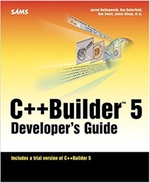The Serverless WayPresented at PHP Minds, 11 October 2018
Serverless applications feel different and you need know why! In this talk I will look at how to design your application the serverless way.
The session will discuss how serverless applications embrace cloud services and live in a world where there are many separate parts, each responsible to for one thing. I'll cover the architectural patterns we use to design a serverless application including handling their stateless nature, how to use multiple functions for a task and leveraging event processing to trigger further functions. I will then turning my attention to showing you how to put these into practice by looking at how they can be implemented in an Apache OpenWhisk application.
By the end of the session, you'll be well placed to design and build your own serverless apps that take full advantage of the decentralised world they live in.
APIs and microservices are how we build modern web applications and serverless technologies make this easy. This session will show you how serverless applications are built and how you can leverage your PHP skills to build APIs of all shapes and sizes. We will cover how to use your current knowledge to build applications in PHP within Apache OpenWhisk, leveraging the API Gateway to build robust APIs quickly and easily. By the end of the session, you'll be well placed to design and build your own microservices that take full advantage of the power of serverless technologies.
APIs and microservices are how we build modern web applications and serverless technologies make this easy. This session will show you how serverless applications are built and how you can leverage your PHP skills to build APIs of all shapes and sizes. We will cover how to use your current knowledge to build applications in PHP within Apache OpenWhisk, leveraging the API Gateway to build robust APIs quickly and easily. By the end of the session, you'll be well placed to design and build your own microservices that take full advantage of the power of serverless technologies.
PHP is arguably the most widely used language for writing web applications and is ideal for writing serverless apps. This session explores why PHP works so well in a serverless environment and how to write serverless PHP functions in Apache OpenWhisk. We'll explore how the common PHP architectural patterns apply directly to serverless, so the transition for PHP developers is easy and see that that PHP developers can easily make use of this exciting to technology to augment their applications.
APIs and microservices are how we build modern web applications and serverless technologies make this easy. This session will show you how serverless applications are built and how you can leverage your PHP skills to build APIs of all shapes and sizes. We will cover how to use your current knowledge to build applications in PHP within Apache OpenWhisk, leveraging the API Gateway to build robust APIs quickly and easily. By the end of the session, you'll be well placed to design and build your own microservices that take full advantage of the power of serverless technologies.
Modern applications increasingly require an API, whether to support rich client-side experiences, mobile apps, or to integrate with other systems, and Lumen is an excellent tool for this job. Lumen is lightweight and focussed on providing stateless, JSON APIs which is ideal. I want your API to be a good HTTP citizen and will show you how to build a really excellent and robust API in Lumen including how to handle core HTTP features, such as media negotiation & status codes. We'll also look providing developer-friendly features like thoughtful error handling and documentation. By the end of this session, you'll know how to build great Lumen APIs that give you a competitive edge, ensuring that developers want to work with it.
Serverless systems are becoming mainstream and are an exciting addition to your dev toolbox. I will help you understand what serverless is & how it improves software development as we concentrate solely on our code without worrying about infrastructure concerns. PHP is the language of the web and with native support in OpenWhisk and Azure functions, this true for serverless too. This session will introduce you to serverless PHP and show you how to easily build application with this up and coming technology.
This workshop introduces using Laravel’s opinionated rapid development concepts to create a real, working website. You’ll use the Blade templating engine, database access through Eloquent, command line using Artisan and acceptance testing using Dusk. Attendees will leave the session knowing how to quickly and easily create a simple, secure web application using Laravel.
Zend Expressive 3 is the ideal framework for building PHP applications of all types. Its easy-to-understand architecture makes it ideal for projects of all shapes and sizes. In this talk, I'll show you how to build an Expressive application than can scale with your needs. We will look at how Expressive's middleware system leverages the upcoming PSR-15 specification to create easily understandable and flexible applications. We will cover application setup, routing and error handling before diving into some thoughts on how architect an Expressive application. By the end of the session, you will be equipped to create Expressive applications yourself.
OAuth 2 is the gold standard for authentication in APIs and in this talk I took a deep dive into how it works and how to implement an OAuth 2 server in your API. There are a number of work flows in OAuth 2 for different scenarios including mobile apps and websites connecting via JavaScript, so I looked at each one and showed how to implement the password and client credentials grant types.


